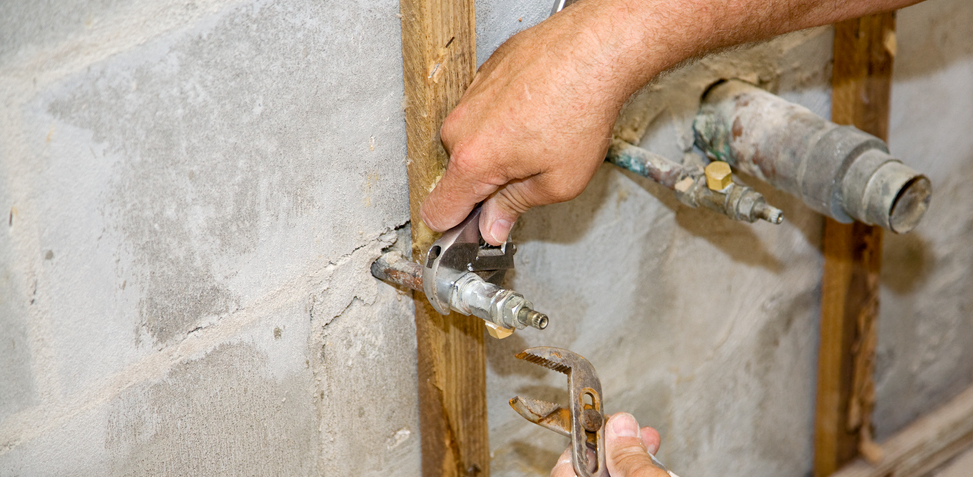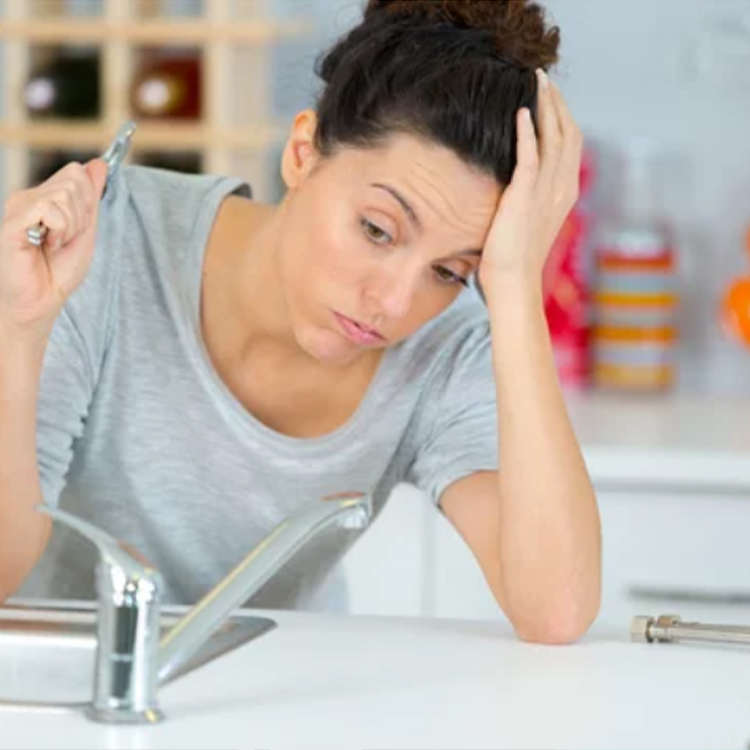The publisher is making a number of great pointers regarding Plumbing Problems In Old Homes in general in this great article directly below.

Older homes frequently come with charm, personality, and background, but they can additionally bring a host of pipes issues. Whether you're dealing with maturing pipes, low tide stress, or leaks, understanding how to attend to these common troubles is important to maintaining a risk-free and useful home. In this guide, we'll explore the normal plumbing difficulties faced by older homes and supply functional solutions to maintain your plumbing in top form.
Understanding Typical Plumbing Concerns
Aging Pipes
Among the most typical issues in older homes is aging pipes. Depending upon the age in which your home was constructed, the pipelines might be made from materials that have actually deteriorated over time, such as galvanized steel, cast iron, or perhaps lead. These materials can wear away, come to be fragile, or develop leaks, bring about water damage and prospective carcinogen.
Low Tide Stress
If you're experiencing low water pressure, maybe due to mineral deposits, deterioration inside the pipelines, or old components that are no longer working successfully. This can be a significant inconvenience, particularly in areas like showers and sinks.
Dripping Pipelines
Leakages are another frequent problem in older homes, usually caused by corroded or damaged pipelines. Also tiny leakages can bring about significant water damages, mold growth, and boosted water expenses if not attended to immediately.
Out-of-date Fixtures
Out-of-date pipes components such as taps, bathrooms, and showerheads not only look old but may also be less efficient, prone to leakages, or inappropriate with modern-day pipes criteria.
Pipe Rust
Rust is a typical issue in older pipelines, especially those made from galvanized steel or actors iron. Rusty pipelines can limit water circulation, trigger staining, and ultimately cause leakages or pipeline ruptureds.
Examining the Problem of Your Plumbing
Examining Visible Pipelines
Begin by examining any type of visible pipes in your house, such as those in cellars, crawl spaces, or under sinks. Look for indicators of deterioration, leakages, or rust, which can indicate underlying issues.
Looking for Leaks
Look for leakages by examining areas around taps, commodes, and under sinks. You can likewise monitor your water meter before and after a period of no water use to discover surprise leakages.
Water High Quality Testing
Older pipelines can impact the high quality of your water. Conduct a water quality test to look for contaminants such as lead, corrosion, or various other pollutants that may be presented by maturing pipes.
Solutions for Typical Plumbing Problems
Changing Aging Pipelines
If your home has old, weakening pipes, take into consideration changing them with contemporary materials like copper or PEX. This can be a substantial financial investment, but it will certainly prevent future issues and boost the security and reliability of your pipes system.
Repairing Low Tide Pressure
To repair low tide pressure, beginning by cleaning or changing old fixtures and getting rid of mineral build-up in the pipes. If the trouble persists, it might be required to change sections of rusty pipes.
Fixing and Replacing Dripping Pipes
For little leaks, you can utilize pipe clamps or epoxy putty as a temporary solution. However, it's ideal to replace dripping pipelines completely to avoid more damage.
Updating Fixtures
Updating old fixtures to modern-day, water-efficient models can enhance your home's pipes performance and minimize water intake. Try to find fixtures with the WaterSense tag for the best effectiveness.
Dealing with Pipe Deterioration
If your pipes are worn away, replacing them with corrosion-resistant materials like copper, PVC, or PEX is the most effective solution. Routine examinations and water quality upkeep can assist prevent additionally deterioration.
When to Call a Professional
While some pipes concerns can be taken care of with do it yourself services, there are times when it's finest to hire a professional. If you're managing major leakages, considerable corrosion, or are uncertain regarding the problem of your pipelines, a qualified plumbing professional can provide professional evaluation and repair service.
Preventive Upkeep Tips
Regular Inspections
Routinely examine your plumbing system for indications of damage. Catching issues early can avoid costly fixings down the line.
Water Pressure Regulation
Ensure your water pressure is within the suggested variety to stay clear of stressing your pipes and fixtures. A plumbing can set up a stress regulatory authority if required.
Water Quality Maintenance
Set up water filters or softeners if your water quality is poor. This can safeguard your pipes and fixtures from damage triggered by difficult water or contaminants.
Aggressive Pipeline Replacement
If your home has very old pipelines, take into consideration aggressive replacement before major problems emerge. This can conserve you from emergency fixings and water damages.
Final thought
Taking care of plumbing issues in older homes needs a combination of vigilance, preventive upkeep, and prompt upgrades. By recognizing the typical difficulties and understanding when to seek professional help, you can guarantee your pipes system continues to be useful and trusted for years to find.
Common Plumbing Problems in Older Homes
Older homes have a ton of character from the antique brass faucets, clawfoot tubs, and colorful tile to the Dutch doors, transom windows, and archways, there s a lot to love. Unfortunately, that character often includes old plumbing that s past its prime and isn t fit to support modern appliances.
If you own an older home and are suspicious about strange noises (ghosts?), smells, leaks, or frequent clogs in your plumbing, it's possible that your home s old age is to blame.
Learn more about the most common old house plumbing problems, and what can be done to fix them!
What Are the Most Common Plumbing Problems in Old Houses?
Old, corroded piping. Most older pipes are made of material that corrodes and rusts more easily. Even if over the years some of that piping was replaced with better material, the rest may be damaged or repaired with lower-quality material. Though expensive, it may be the best option to re-pipe your plumbing especially if there s rust or lead in your water. Slow drains. This could be the result of many issues, but most likely because of pipe bellies. These are sags in your drainpipes that happen as your home settles and shifts downward over time, putting pressure on your pipes and creating negative slopes. This can restrict water from flowing correctly through them and result in slow drains. Frequent clogging. As you might expect, pipe bellies can also lead to frequent clogging. Another reason for clogging could be due to buildup over time, or blockages from sediment and root growth. Scheduling a drain inspection and drain unclogging service can eliminate this issue. Damaged or failing sewer lines. Old homes are more likely to have foundational shifts and tree root overgrowth. This can put a lot of pressure on and in your sewer lines, leading to damage. Another common reason for failed sewer lines is because of modern appliance upgrades. Newer appliances put more strain on sewer lines, and if your old pipes aren t equipped to handle this, it can result in damage. If you have any wastewater backup, slow drains, or soft spots in your yard, you may need sewer line replacement. Worn or outdated fixtures. Plumbing fixtures old or new aren t built to last forever. Even if your fixtures seem like they re working well, it s best to check the wear on any internal parts. Minor wear and tear over time can lead to more costly leaks and plumbing issues. Our experts can perform a plumbing inspection for any part of your home s plumbing. Improper installations or repairs. Whether your plumbing was installed a hundred years ago, installed incorrectly, repaired incorrectly, or repaired with outdated materials, this can affect the long-term stability of your plumbing. In older homes especially, having your plumbing inspected is vital to preventing damage. What Are Old Plumbing Pipes Made Of?
Galvanized steel. Most often used between the 1930s and the 1980s, this piping material was discovered later in the 1990s to be prone to rust and corrosion, releasing lead into the water, which is dangerous to consume. Copper. Most homes built around the 1960s are likely to have copper piping. Unlike galvanized steel, copper is one of the most durable materials for plumbing pipes. The issue with this material is the risk of lead, which could be present in the piping itself or the solder applied to the joints and fittings. PVC. This material is still used today and was often used in older homes where piping was replaced because it was easy and inexpensive to install. PVC is also very durable, lead-free, resistant to rust and corrosion, and handles high water pressure well. The downside is that hot water can make it warp. How to Fix Plumbing Problems in Old Homes
Have your plumbing inspected. Before you begin or schedule any type of repair, schedule a plumbing inspection. An expert will be able to properly identify all the issues in your plumbing and the best solution to avoid further damage. Get your plumbing repaired or replaced as needed. Depending on the issues found with your plumbing, you may need minor repairs or larger replacements. Make sure these issues are addressed before you tackle any smaller issues. Remove any clogs or buildup. It s likely your old pipes are clogged with debris, mineral buildup, hair, tree roots, and more. Having your drainpipes cleaned will improve overall drainage and help prevent future leaks. Replace old fixtures. Before replacing any fixtures, check with your local plumber first. Not only can new fixtures strain your old plumbing pipes, but installing them incorrectly can lead to costly damage.

We were guided to that report about Common Plumbing Challenges In Old Buildings through an associate on a different website. For those who enjoyed our blog posting if you please don't forget to pass it around. We recognize the value of your readership.
Check Us Out